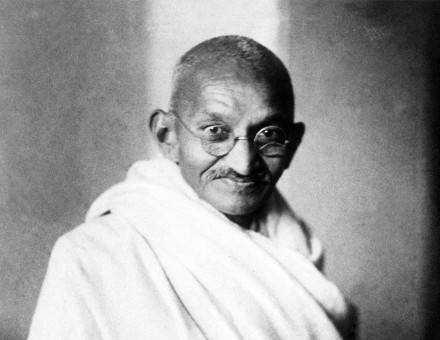‘Europe and the Roma’ by Klaus-Michael Bogdal review
Klaus-Michael Bogdal’s Europe and the Roma: A History of Fascination and Fear is a history of a people’s battle to tell their own story on their own terms.

Ethnic and cultural difference was, in late 19th-century Europe, of keen interest to scholars and the public alike. When, for instance, a Roma group made camp near Berlin in 1885, tourists sought it out, driven by curiosity. The Berlin camp was not unique; across Europe photographers, artists, grammarians and others took interest in the Roma. In Hungary and Romania, folklorists took the summer air and observed Roma life. In Britain, a travelling Romani family found themselves the focus of so much attention that they struggled to keep visitors out of their tents at mealtimes. One member of this family, Lazzy Smith, decided to make Romani culture visible to non-Romanies on his own terms by offering a pay-to-view experience. He famously appeared at the 1886 Liverpool International Exhibition and published an accompanying pamphlet.
Klaus-Michael Bogdal’s Europe and the Roma is, largely, a history of the Roma people’s battle to tell their own story on their own terms. And it is a battle: who these people were, what it meant to be Roma, and what that meant for the rest of society are questions that have been perennially caught in the tides of European politics since the late Middle Ages. For at least 600 years, diverse groups such as the Sinti, Calé, Manouches and Kalderash have been categorised, simply, as ‘gypsies’ and alien to European civilisation. (Bogdal uses a lowercase ‘g’ to indicate an exonymous cultural construction, but ‘Gypsy’ refers to a legally recognised ethnicity in the UK and is usually capitalised.) The book pushes against the tired assumption that the Roma then, as now, face a simple choice: assimilate, or suffer as outsiders.
The story begins with the 15th-century chroniclers who incorporated reports of Roma arrivals in cities across Europe into existing knowledge about outsiders; as such, the Roma became Saracens, Tatars, dukes, spies, soldiers, beggars, pilgrims or exiles. To be located in some of these categories was more dangerous than others; it could mean slavery in Romania, imprisonment in northern Europe, or the king’s protection in Moldova. Historians have long attempted to piece together the narratives that Roma groups told about their own origins and intentions, using sources such as letters guaranteeing various nobles ‘of Egypt’ safe passage (now in the archives of Karlsruhe, Modena, Saxony and Schleswig-Holstein). The task is made complicated as often the primary aim of finding peace and assistance (rather than fear and banishment) shapes the story told by these documents.
Bogdal recognises that for much of the period he covers, literature has been a powerful tool, capable of both reinforcing and undermining the assumptions about ‘gypsies’ propagated in legal, religious, ethnographic and sociological texts. We learn that the motifs of Ben Jonson’s 1621 masque The Gypsies Metamorphos’d were not only replicated in later English works such as Henry Fielding’s Tom Jones (1749) but are also evident in popular literature from across Europe, especially Germany. Those motifs – the adventures, excesses and comeuppance of organised criminal gangs – became a fashionable topic in 18th-century culture, found in novels, handbills, poems, newspapers and ballads. But more dangerous than depictions of petty thievery and playful trickery, the gypsy figures pulled into these imagined gangs of murderers and kidnappers were often presented as congenital criminals.
‘Enlightenment’ thinking from the end of the 18th century adopted and adapted early modern prejudices towards Roma people. Anthropology, for instance, positioned the Roma as everything that civilised cultures had left behind in their movement towards modernity. Artistic representations often saw the Roma as a kind of ‘noble savage’. Bogdal calls this period a ‘second de-Europeanization’ and goes further than most writers on this topic in seeing it as a ‘trial run in the mind’ for the genocide that would follow in the 20th century.
There are numerous historical accounts of the Nazi genocide of Roma and Sinti people, but the facts need repeating, often and emphatically. In 1938, Heinrich Himmler proposed the ‘Resolution of the Gypsy Question in Accordance with the Nature of this Race’. This included racial categorisation, prohibitions on marriage, removing children from their parents, sterilisation, imprisonment and, ultimately, mass murder. Between November 1941 and January 1942 around 5,000 Roma were sent to the Łódź ghetto and then gassed at the Chełmno extermination camp. The systematic transportation of Roma and Sinti to concentration camps began in 1943. It is not enough to look at the period from 1938 onwards; as Bogdal makes clear, the genocide of the Roma cannot be separated from the cultural depictions of them as a threat in the decades preceding it.
One Roma voice which succeeded in being heard among the clamour of romanticised or racist descriptions in postwar Europe is that of French author Matéo Maximoff (1917-99), son of a Kalderash Roma from Russia and a Basque Manouche. His novels, including The Ursitory, The Seventh Daughter and Condemned for Surviving, observe majority society from a Romani perspective but are not limited by the near horizon of personal experience. They explore social codes, clan rivalry and family dynamics, but also war and revolution – issues that faced all of Europe.
Among the book’s startling conclusions is Bogdal’s opinion that it is the timing of the Roma people’s arrival in Europe that accounts for the persistence of fear and fascination: ‘They arrived just in time to serve as a negative example defining the idea of a European culture.’ As such co-existence between Roma and non-Roma was seen as impossible. In the centuries that followed, cultural representation has been a matter of life and death. In such a struggle, the best weapon is Roma voices telling Roma stories.
Europe and the Roma: A History of Fascination and Fear
Klaus-Michael Bogdal
Allen Lane, 608pp, £40
Buy from bookshop.org (affiliate link)
Jodie Matthews is Professor of Literature at the University of Huddersfield.






